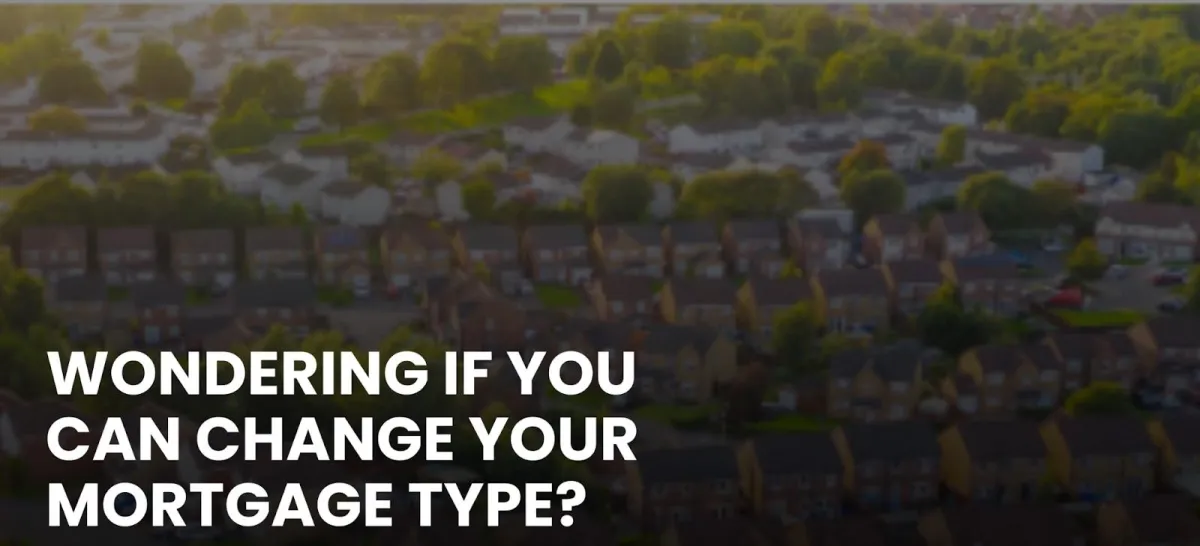
Wondering If You Can Change Your Mortgage Type?
Wondering If You Can Change Your Mortgage Type?
Many homeowners choose either a fixed or variable rate when they first get their mortgage—but what if your needs or the market changes partway through? Can you switch from a fixed rate to a variable one? Or go from a variable to fixed?
The short answer is yes, in many cases, but there are important factors to consider. Let’s break it down.
What’s the Difference Between Fixed and Variable Rates?
Here’s a quick refresher:
Fixed-rate mortgages lock in your interest rate and your payment for a set term (usually 1–5 years).
Variable-rate mortgages are tied to your lender’s prime rate. Your payment or how much goes toward interest may change if the Bank of Canada adjusts the overnight rate.
One of the biggest differences between these mortgage types shows up when you want to break your mortgage early—which is exactly what happens if you want to switch types before your term is up.
Penalties: Fixed vs. Variable
If you want to switch mortgage types mid-term, you'll need to break your current mortgage—and that can come with penalties.
For fixed-rate mortgages, the penalty is the greater of three months’ interest or the Interest Rate Differential (IRD). The IRD is a calculation based on how much rates have dropped since you signed. It can be very expensive, especially if you’re early in your term.
For variable-rate mortgages, the penalty is always three months’ simple interest, making it a much more predictable (and often cheaper) cost to break.
This difference is one reason some homeowners prefer variable rates—not just for the lower starting interest, but for the lower cost to exit if they need flexibility.
Switching from Fixed to Variable
It’s not very common for people to go from fixed to variable mid-term, mostly because of the potential penalties. That said, it can make sense in some scenarios:
You’re refinancing anyway to access equity, consolidate debt, or make home improvements
You want to roll the penalty into your new mortgage
You believe variable rates will remain lower for the remainder of your term
Keep in mind that you won’t get the variable rate you were originally offered. You'll be subject to current rates in the market. Also, if you're staying with your current lender, they may offer a reduced penalty to keep your business—but that isn’t always the case.
Switching from Variable to Fixed
This option is much more common—and usually easier to execute.
Most variable-rate mortgages in Canada allow you to lock into a fixed rate at any time during your term. Here’s what to know:
You can request to lock in with your current lender
There’s no penalty for switching as long as you don’t change lenders
The fixed rate you’re offered is based on current rates, not the fixed rate you were originally offered when you started
You’ll need to lock into a fixed term that’s equal to or longer than the time remaining on your original mortgage
Misconception About Locking In
A lot of homeowners believe that if they originally had the option to go fixed or variable, they can still access that original fixed rate when locking in. That’s not true. You’ll be offered the lender’s current fixed rates at the time you decide to lock in, which may be higher or lower than before.
For example, if you took a five-year variable rate mortgage two years ago, and now want to switch to a fixed rate, you’ll need to lock into a three-year term or longer—at current fixed rates.
When Does Locking In Make Sense?
Locking in makes the most sense when rates are rising. Many homeowners chose to convert from variable to fixed in 2022 and 2023 as rates increased sharply. On the other hand, in today’s market environment, we’re seeing a different trend.
Right now, the Bank of Canada is expected to continue lowering rates. Because of that, locking in at a fixed rate today may not be the best strategy for everyone. Many homeowners are choosing to wait for another rate cut—or two—before making any changes.
Fixed vs. Variable: Different Drivers
It’s also important to understand that fixed and variable mortgage rates are influenced by different economic factors:
Rate Type
What It’s Based On
Variable Rate
Bank of Canada Overnight Rate → Prime Rate
Fixed Rate
Canadian Bond Yields
Just because the Bank of Canada lowers its overnight rate (affecting variable rates), doesn’t mean fixed rates will drop. Fixed rates depend more on bond market activity, which is tied to broader economic trends—including inflation, housing demand, and even U.S. political developments.
This can lead to confusion when fixed rates stay high while variable rates fall—or vice versa. That’s why you’re often offered both options when you get a mortgage, and why brokers may recommend shorter fixed terms (like 2 or 3 years) during volatile markets, so you can reassess your options sooner.
What Happens at Renewal?
If you’re nearing the end of your mortgage term, this is the easiest time to switch from fixed to variable—or vice versa—without penalty. At renewal, you can renegotiate your terms, switch lenders, or explore better options that fit today’s market conditions and your financial goals.
Let’s Review Your Mortgage Strategy
If you’re thinking about switching your mortgage type, refinancing, or approaching renewal, let’s talk through your options. Every situation is unique—and your mortgage should match your plans, not the other way around.
Let’s find the option that makes the most sense for you.
Call 403-703-3694
Email [email protected]